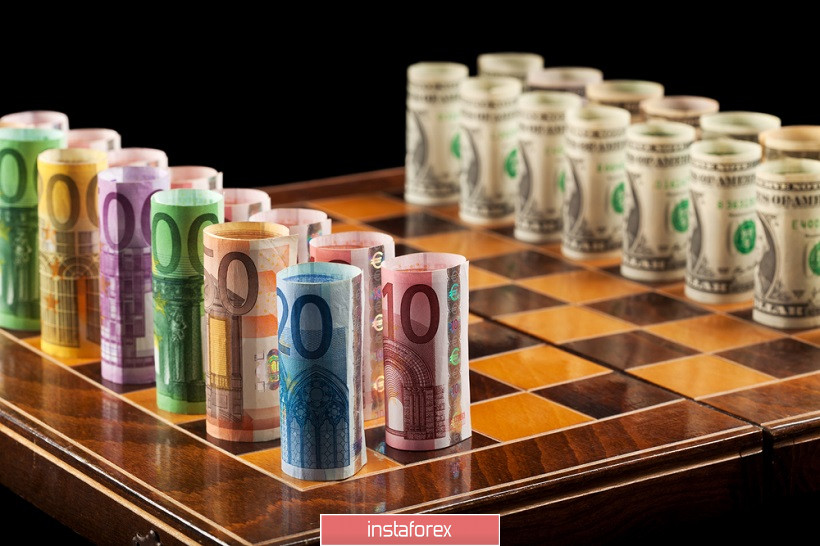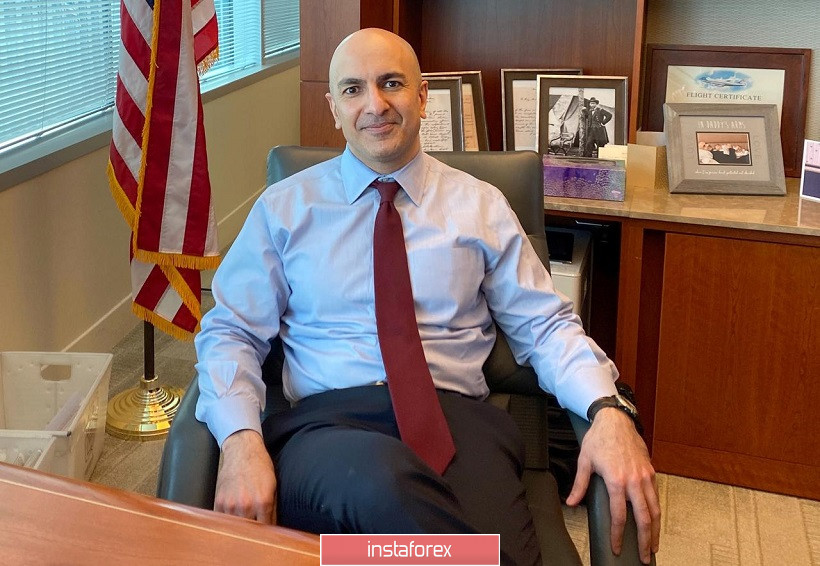The euro/dollar pair cannot determine the vector of its further movement. Over the past two weeks, the currency market has reacted sharply to key fundamental events: the results of the ECB meeting provided short-term support for the euro, while the results of the Fed meeting provided short-term support for the dollar. However, in the end, the currencies remained almost in the same positions as before the September meetings. The main releases (inflation, unemployment, industrial production) also did not make a proper impression on traders, due to their inconsistency. Therefore, the pair is stuck within the wide-range flat. That is, on the one hand, the price shows volatility (sometimes falling to the base of the 17th figure, then rising to the area of the 19th price level), but on the other hand, it stands still.
If we look at the daily or weekly chart, we will see that EUR/USD has not been able to leave the price range of 1.1770-1.1950 since the end of July. Impulsively, the price declined/rose below and above the limits, but then invariably returned to the established range. Contrary to the expectations of many experts, central banks failed to direct market participants "on the right path": neither Jerome Powell nor Christine Lagarde is interested in strengthening currencies, while their "dovish" rhetoric did not become a catalyst for weakening – neither the dollar nor the euro.

The problem is that at the end of the summer, the EUR/USD pair approached the most important psychologically important resistance level of 1.2000. The pair last traded above this target in early 2018. This level is of strategic importance, but for ECB members, this target is like a red rag for a bull. As soon as the price tested the mark of 1.2000, the chief economist of the European Central Bank criticized the exchange rate of the euro, thereby provoking a southern pullback. There are rumors on the market that the regulator will conduct a currency intervention (or at least announce it). Although Lagarde limited herself to "verbal censure", the market has learned a lesson: as soon as the pair crosses the 1.1950 line, it immediately attracts the attention of sellers. Buyers, in turn, take profits, not daring to storm the key resistance level. In other words, the mark of 1.2000 is a real "headache" for EUR/USD bulls. To overcome this price barrier, a powerful informational occasion is needed.
At the same time, the pair's southern prospects also look hazy. The maximum that EUR/USD bears are capable of is a descent to the base of the 17th figure (the two-month low was marked at the level of 1.1702). In this price area, buyers "wake up", which extinguishes the southern impulse with their activity. And the overall fundamental picture does not contribute to a large-scale strengthening of the US currency. The updated Fed strategy still serves as an anchor for the greenback, especially against the background of conflicting data on the growth of inflation in the United States. If in annual terms, the consumer price index showed an increase in August, then every month - on the contrary, it reflected a slowdown.
According to the new strategy of the US regulator, the central bank will start tightening monetary policy only after inflation is fixed above the target two percent level. However, inflationary growth is uncertain, so this fundamental factor cannot catalyze the revaluation of the greenback. The temporary strengthening of the dollar following the results of the September Fed meeting is explained only by the demarche of Robert Kaplan, who called on his colleagues to take a more flexible approach to implement the new strategy. However, this is the "voice of the crying in the desert" - for some reason, the market focused on his speech, but left out Neil Kashkari, who voiced the "dovish" rhetoric.
That is, the split in the Fed camp occurred in two directions: if Kaplan advocated a more flexible approach, then Kashkari voiced the opposite idea: he suggested declaring that the rate will remain at zero until core inflation exceeds the target level "on a stable basis". Despite the opposite thoughts, the market interpreted this split of opinions in favor of the US currency. Although the results of the September meeting were clearly "dovish" - if only because the Federal Reserve moved the possible date for raising the rate for another year. That is why the southern dynamics of EUR/USD did not continue. As soon as the first emotions subsided, traders came to the reasonable conclusion that there are no valid arguments for strengthening the greenback.

Thus, the bulls and bears of EUR/USD do not have enough "information fuel". Buyers need to enter the 20th figure, while sellers need to go below 1.1700. The economic calendar next week is quite poor, so the market will focus on American political events, Brexit negotiations and the news flow from the "medical front", in the context of creating a vaccine against COVID-19. In my opinion, the priority for the EUR/USD pair remains for long positions – the dollar was not helped by Nonfarm (which came out in the "green zone"), nor by inflation indicators (which also came out better than expected), nor by the results of the Fed meeting. The single currency, in turn, enjoys "tacit support" from the ECB. Therefore, from the current positions, we can consider longs with the first northern target at 1.1930 (the upper line of the Bollinger Bands indicator) and the main target at 1.2000. It is too early to talk about further northern prospects.
 English
English 
 Русский
Русский Bahasa Indonesia
Bahasa Indonesia Bahasa Malay
Bahasa Malay ไทย
ไทย Español
Español Deutsch
Deutsch Български
Български Français
Français Tiếng Việt
Tiếng Việt 中文
中文 বাংলা
বাংলা हिन्दी
हिन्दी Čeština
Čeština Українська
Українська Română
Română

